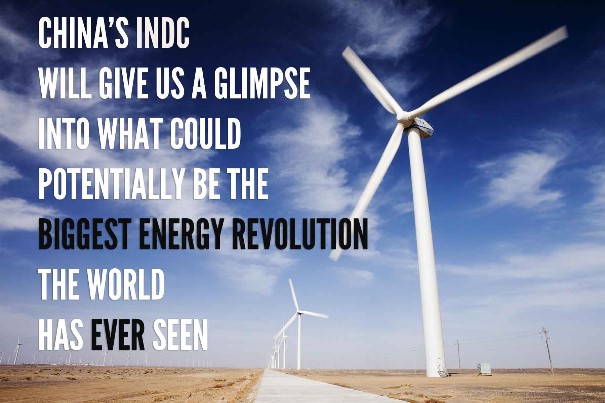
China has dominated climate and energy news these past few weeks. But soon, four letters are going to top the headlines: INDC. So what’s it all about?
What are INDCs?
Understanding INDCs requires a brief struggle with UN jargon. The four letters stand for Intended Nationally Determined Contributions — which doesn’t exactly trip off the tongue. But put simply, they are climate plans which outline governments’ commitments to tackle climate change post-2020. They are the result of an agreement reached at the UN Climate conference. Any country that was ready to do so would submit detailed and complete plans for their strategy to combat climate change well in advance of the Paris meeting.
So far, only 12 countries have done so. But with China, the last of the three biggest emitters (alongside the US and the EU), poised to release by the end of the month, the world is waiting with bated breath.
What do INDCs contain?
Smaller, developing nations need only submit a broad outline of their plans to commit to a low carbon future.But other nations like China need a more detailed plan, including a timeframe for peak emissions, detailed methodology for calculating emissions and a clear explanation of how this contributes to the UN’s targets.
The confines of the INDCs are still fairly broad however, leaving room for countries to develop the strategy in their own way. This means that the various INDCs can differ vastly, even between comparable economies, which makes the content more difficult for climate watchers to predict.
Why is it important?
The importance of this event can’t be emphasized enough. INDCs are critical to the success of achieving the UN’s goal of limiting global warming to 2 degrees above pre-industrial levels- the point at which scientists have warned us that the climate could spin out of control. This is the first time that a unified commitment of this scale has been made including both developed and developing nations: a global movement away from fossil fuels and towards a clean future.
China’s INDC
China’s INDC is expected to drop any day now and some positive progress has been made. China is at the beginning of a huge structural shift away from carbon; it is already massively scaling up its investments in renewable energy; there are encouraging signs that China could reach its peak emissions five years earlier than previously estimated and coal use is already falling.
China’s INDC will give us a glimpse of what could potentially be the biggest energy revolution the world has ever seen.
But is it enough?
According to Li Shuo, climate and energy campaigner at Greenpeace East Asia: “When China’s INDC is formally on the table, countries responsible for well over half of the world’s pollution will have put forward climate action commitments. But these plans move us only some of the way towards limiting global warming to well below 2 degrees.”
Further action needs to be taken: “In order to make up the difference,” Li Shuo says, “countries will need to strike an agreement in Paris this December that will make them regularly check in, assess their collective progress, and scale up their efforts over time, including well before the agreement comes into effect in 2020.”
Beyond the positive projections, the release of the INDC will show us China’s true intentions regarding climate change. As the country responsible for 28% of the planet’s annual CO2 emissions, the impact of China’s climate plan will be felt across the globe.
This could be a watershed moment. China has the power to push the rest of the world out of danger and into a low-carbon future. We are at a crossroads with two possible futures and China could lead the way. But whatever happens, the climate conference in Paris is just the starting line: the finish line is still too distant to see.
